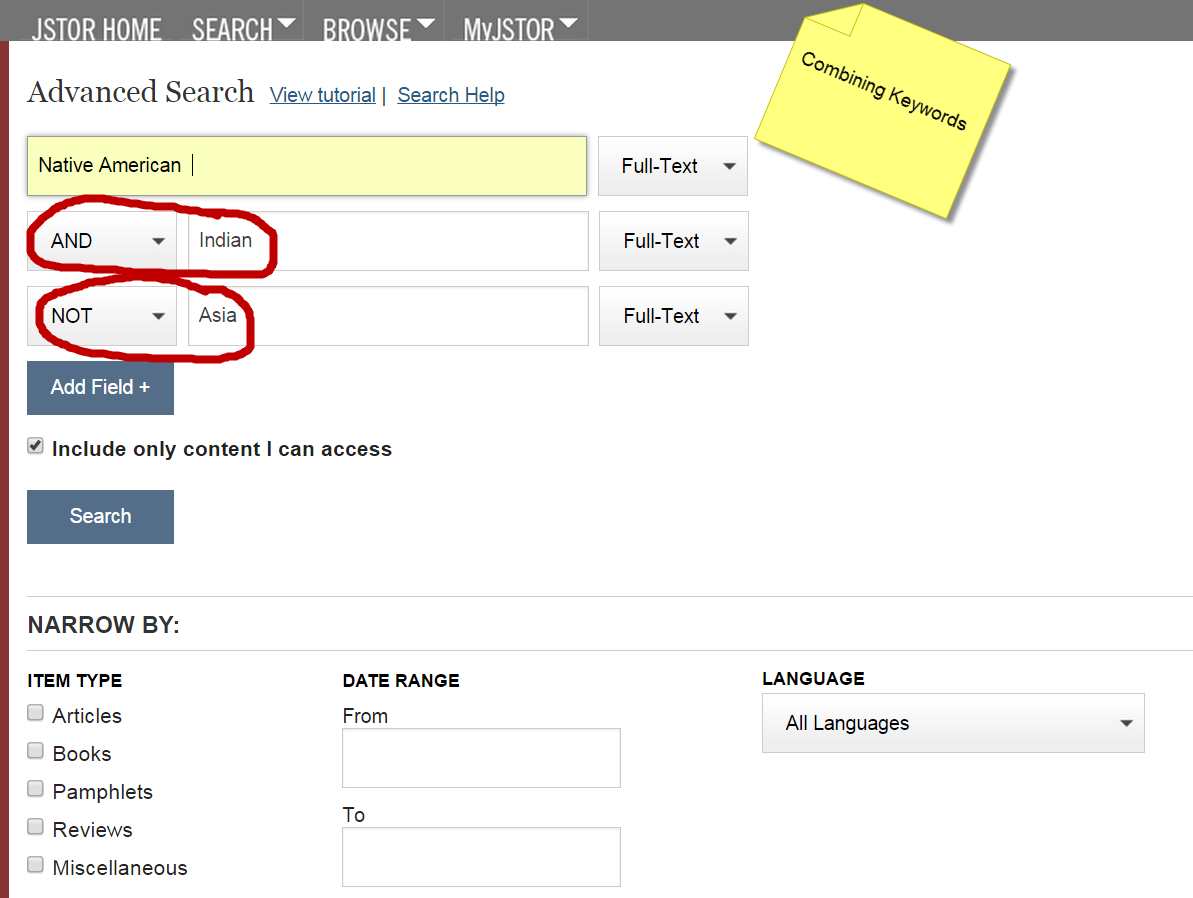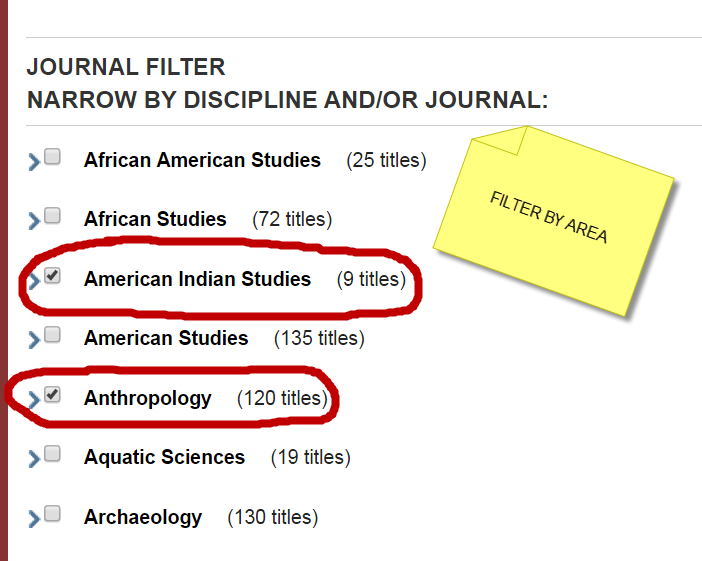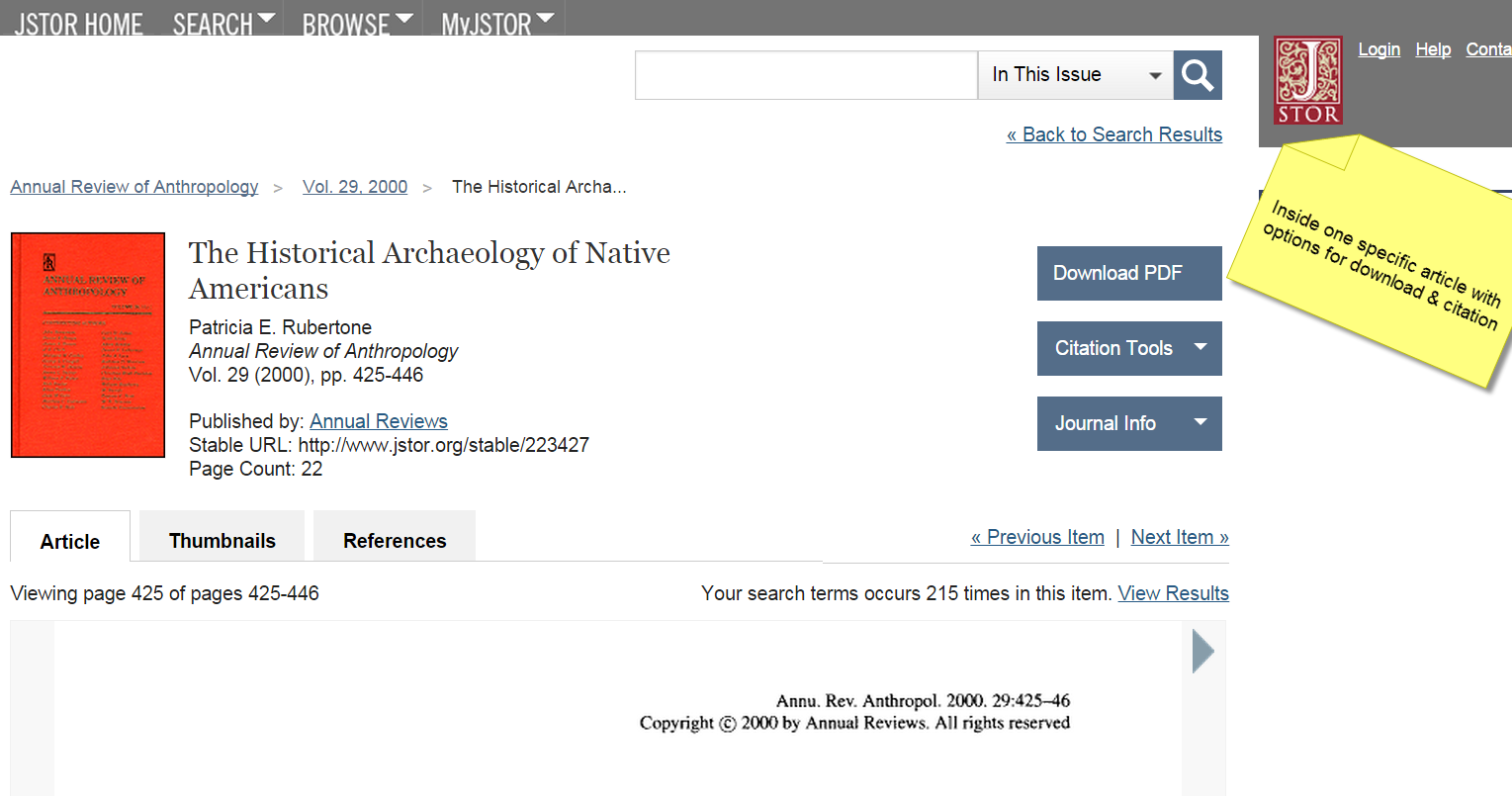
Database of the Month: JSTOR
November 10, 2015
 JSTOR history
JSTOR history
The idea for JSTOR originated in a library that was running out of space at Denison University in Granville, Ohio, a small, prestigious liberal arts college. The Doane Library made a request for expansion of its building to house academic journals in print. At that time in 1992, the higher education market for scholarly literature in hard copy format was active and increasing steadily. Rising costs and infrastructure limitations applied pressure on academic libraries. Many feared this pressure would result in fewer libraries collecting less scholarly output, so the JSTOR Project was the answer, launched with help from a Mellon Foundation grant in 1992. JSTOR digitized multiple print and microfiche sources immediately and began offering paid electronic access to these files. Its broad mission was, and still is, to help the academic community access scholarly resources online while capitalizing on advances in technology. It grew to become its own independent not-for-profit organization (1995), and today JSTOR is owned by Ithaka, a not-for-profit organization based in New York, NY. JSTOR enjoys a strong reputation for delivering quality, scholarly content.
What sets JSTOR apart?
- 2,000 academic journals with a large backfile, some of which dates from the 1850’s
- 2 million primary sources
- All scholarly
Libraries choose to subscribe to individual archive collections. Bentley’s subscription to JSTOR includes material from 78 different areas (“disciplines”) and the Bentley courses most likely to use JSTOR are:
- business (marketing, management)
- social sciences (writing, ethics, psychology)
- natural and applied sciences
Searching JSTOR Efficiently
JSTOR is special because it contains a rich vocabulary drawn from the accumulation of many terms over many years, all of which potentially can point researchers to subtleties in the literature. Researchers can use to their advantage keyword combinations joined by AND, OR, and NOT operators. The sample search below is built to get articles about Native Americans but not the country in southeast Asia which also uses the word “Indian”.
Researchers can set limits and seek only in specific content areas (see below).
JSTOR serves up its articles in PDF format. This is the landing page of an article with metadata and options:
Technical Features
Like many databases, JSTOR offers…
- Organization tool, MyJSTOR in which researchers can set up journal alerts, save searches, and manage citations
- Mobile device access which is a recent development, boasting of responsive design enabling the JSTOR interface to adapt its output to the screen of a hand held device
- Friendly citations issued in a neutral style which can be exported to outside bibliographic citations tools such as RefWorks or EndNote
- Persistent and stable URL’s for suitable for email or posting in Blackboard
- Help tutorials and PDFs

Something to Keep in Mind
JSTOR carries publications with a time delay. Much of this database’s collection content is subject to a “grace period” or embargo before users can access it. From the JSTOR website they explain these are "moving walls," usually between 3 and 5 years. Publishers may elect walls anywhere from zero to 10 years. JSTOR will also carry current publications as well as inactive publications. Journals which have no new volumes being added to their archives have a “fixed wall.”
Did You Know?
JSTOR is philanthropic at its roots. In 2006 JSTOR’s library was made freely available in Africa to all educational (and other non-profit organizations) who met their criterion. This benevolent program has expanded to 40 nations beyond Africa since 2008. See JSTOR’s Developing Nation Access Initiative for more information of how they waive or offer reduced participation fees to academic material.
Did You Know?
Pre-1923 content has recently become available for free to all users due to easing of copyright restrictions. At JSTOR, their Early Journal Content (EJC) initiative makes more than 200 journals published prior to 1923 freely available to anyone, anywhere in the world. JSTOR is special because many of its rich resources are entire runs of academic journals. Although JSTOR houses not quite everything under the sun, sometimes result sets will give that impression. When searched thoughtfully, JSTOR can amply support the research needs of Bentley students in undergraduate, graduate, PhD, and online programs.
References
Chepesiuk, R. (2000). JSTOR and electronic archiving. American Libraries, 31(11), 46. Retrieved from http://search.ebscohost.com/login.aspx?direct=true&db=a9h&AN=3856707&site=ehost-live.



